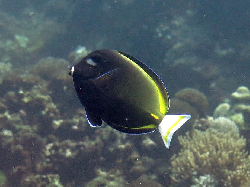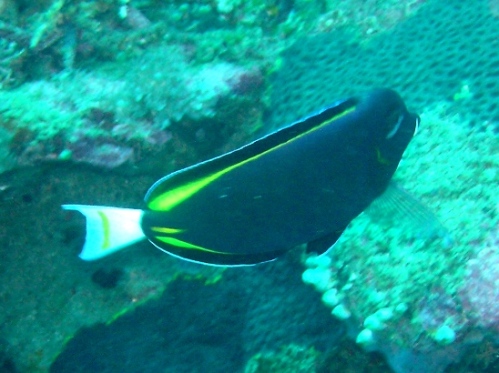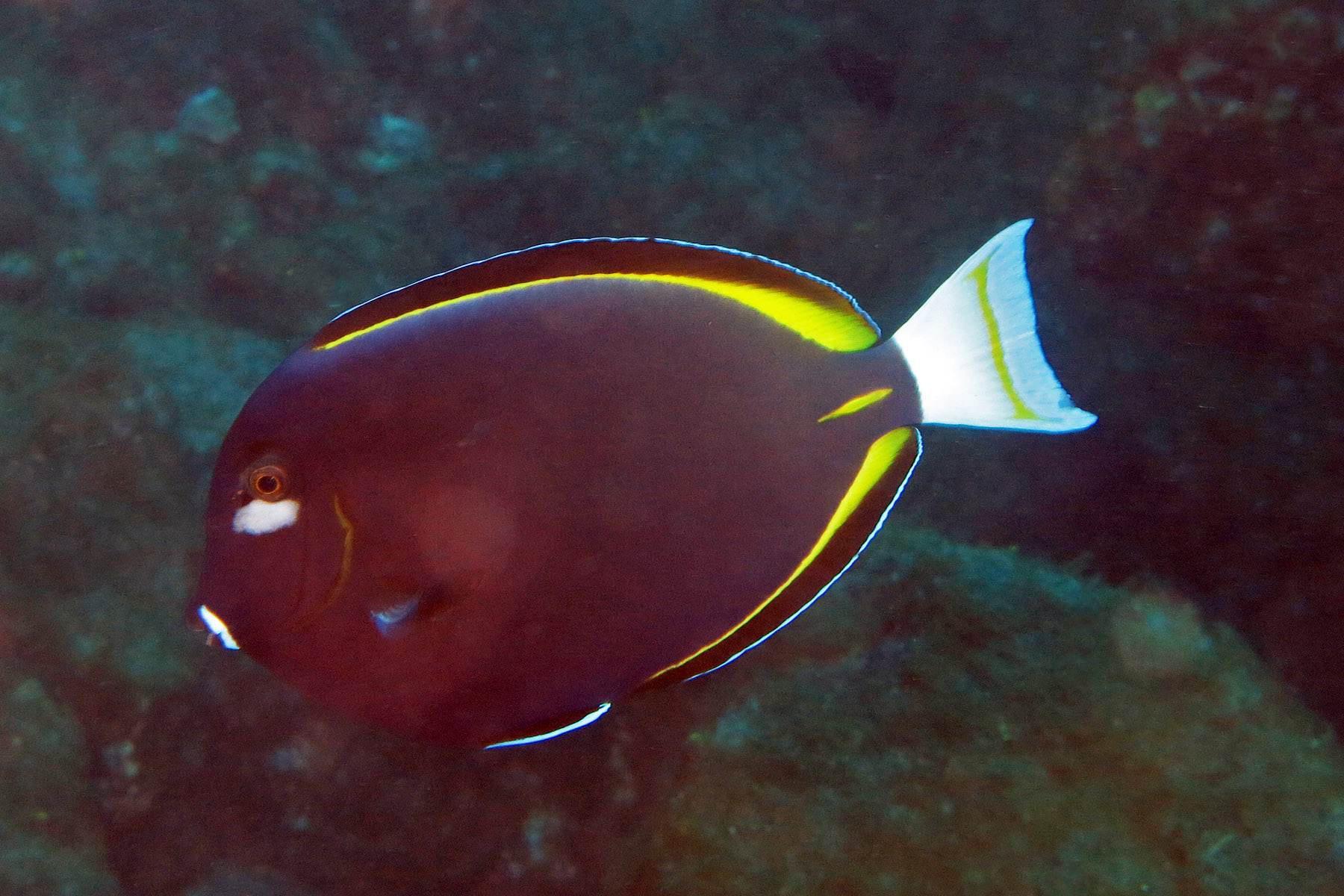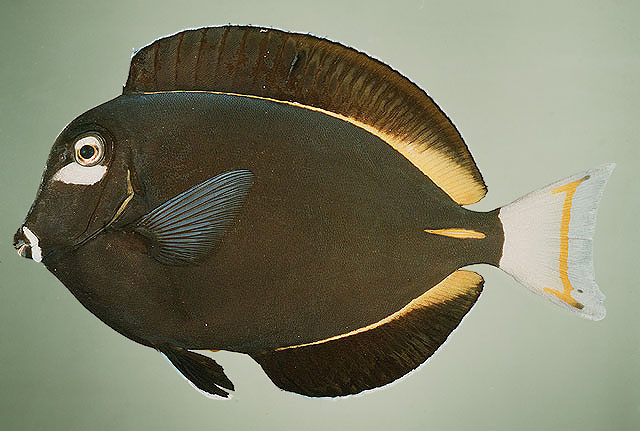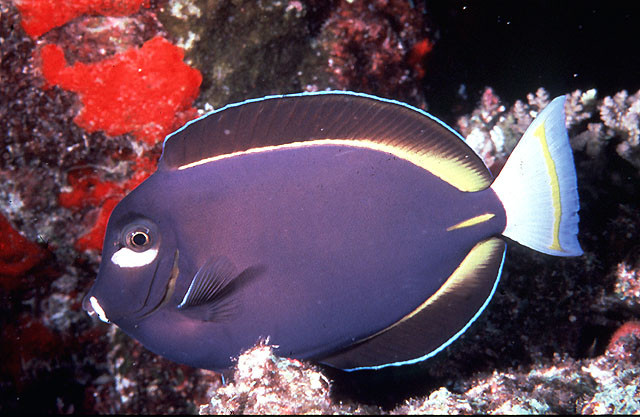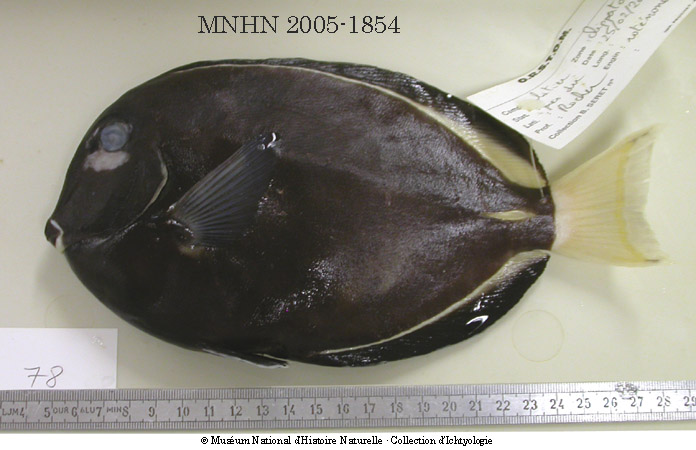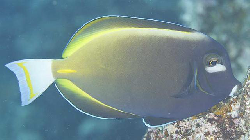Acanthurus nigricans (Linnaeus, 1758)
Description
Dorsal spines (total): 9; Dorsal soft rays (total): 28 - 31; Anal spines: 3; Anal soft rays: 26 - 28. A horizontally elongate white blotch directly below eye. No orange band in outer part of dorsal fin. Caudal peduncle black except for yellow edge of socket and sheath of peduncular spine. Base of pectoral fin black (ref 9808).Gill rakers on anterior row:17-19, on posterior row:18-20.
Common Names
No common names available.
Taxonomic Hierarchy
Kingdom: Animalia
Phylum: Chordata
Class: Teleostei
Order: Acanthuriformes
Family: Acanthuridae
Genus: Acanthurus
Species: Acanthurus nigricans (Linnaeus, 1758)
Climate Zone
Location
Biology
Adults inhabit hard substrate areas of clear lagoon and seaward reefs from the lower surge zone to at least 67 m and feeds on filamentous algae. Solitary or in groups (Ref. 90102). Monogamous (Ref. 52884, 48637). Benthopelagic (Ref. 58302). Small juveniles shy among large corals (Ref. 48637). Territorial species. Common throughout Micronesia and hybridizes with the rare A. achilles. Size of metamorphosis from the postlarva stage to juvenile is 5.5 to 6 cm (Ref. 9267). Minimum depth reported taken from Ref. 128797.
Habitat
associated
Conservation Status
Least Concern
Threat to Humans
Harmless


